ISBN 978-971-570-148-8 Published by NISMED 2015
No. of Pages: 61
____________
The Pupil’s Workbook is a compilation of 54 assessment tasks which are framed to elicit pupils’ understanding of selected mathematics concepts from Grade 1 to Grade 6.
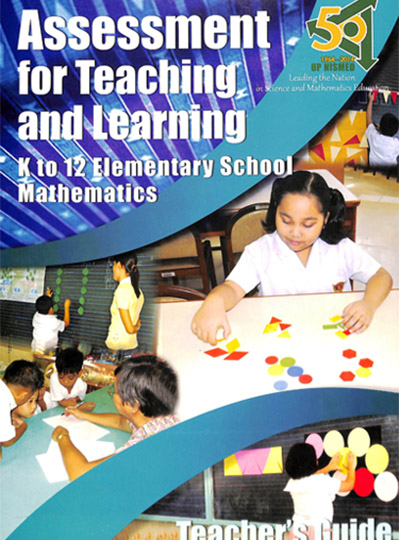
ISBN 978-971-570-149-5 Published by NISMED 2015
No. of Pages: 197
____________
Assessment for Teaching and Learning: K to 12 Elementary School Mathematics comes in a package – a 197-page teacher’s guide and a 61-page pupil’s workbook. The Teacher’s Guide highlights the analysis of pupils’ responses which may be used as inputs to instruction.
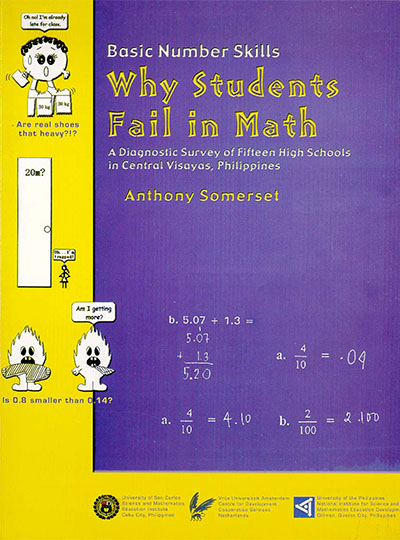
A diagnostic Survey of Fifteen High Schools in Central Visayas, Philippines Anthony Somerset ISBN 971-570-103-5 Published by NISMED August 2002
No of Pages: 104
____________
The test results showed that among public high school students, misconceptions concerning some of the basic elementary level number skills are widespread and persistent. Most students either failed to understand the given information well enough to develop a strategy, or they set up a strategy which was inappropriate to answering the given question. The recommendations given are as follows: remedial teaching, formative teaching in the classroom, correct misconceptions in textbooks, and subject-specific pedagogy, meaning teaching approaches in the key concepts of subjects.

Wally Green ISBN 971-570-119-1 Published by NISMED March 2003
No of Pages: 260
____________
This book is based on courses designed for the use of elementary school teacher training institutions developed by the Mathematics Education Staff for Edith Cowan University in Perth, Australia. It is composed of three units that focus on problem solving number theory, and space and measurement.
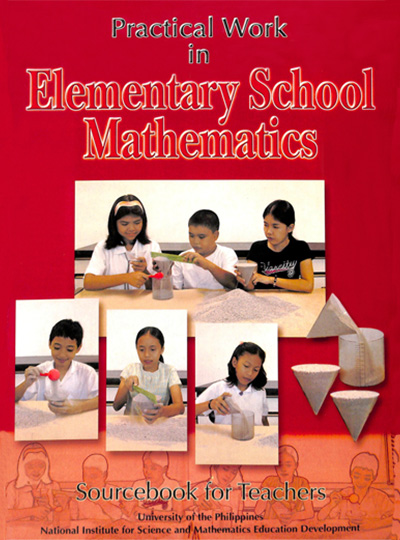
Elementary School Mathematics Group ISBN 971-570-133-4 Published by NISMED 2007
No of Pages: 428
____________
The sourcebooks are intended for preservice and inservice training in mathematics at the elementary and secondary levels. They also provide a rich source of ideas and materials for classroom teaching. The books are products of a series of training programs conducted by the UP NISMED which focused on the use of practical work – a hands-on, minds-on and hearts-on teaching strategy.

High School Mathematics Education Group ISBN 971 570 121 3 Published by NISMED June 2003
No of Pages: 296
____________
This Sourcebook highlights the dynamic nature of the process of teaching and learning mathematics. It provides the teacher examples of lesson plans that promote the use of practical work. Practical work is a teaching strategy where hands-on and minds-on activities are used to develop concepts, investigate relationships among these concepts, solve problems, and engage the teacher and the learners in mathematical thinking. In practical work, the learners are active participants in the learning process. They manipulate objects, experience real life situations and from the insights derived from these, they discuss, explore and construct mathematical ideas. Such a dynamic activity provides a concrete basis for the development of abstract mathematical ideas and higher order thinking skills among the learners.
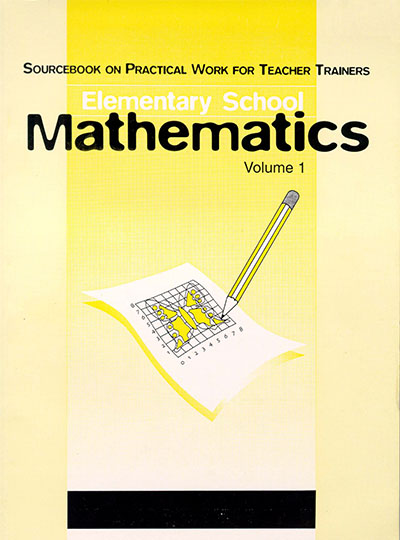
Elementary School Mathematics Education Group ISBN 971-570-023-1 Published by NISMED December 1998
No of Pages: 189
____________
this sourcebook aims at promoting the use of practical work in mathematics teaching in inservice and preservice training programs as well as in classroom teaching. It points out areas where mathematical investigation may come naturally. The trainers and trainees are enjoined to explore other areas in the sourcebook which lend themselves easily to mathematical investigations. The importance of mathematical investigation cannot be overemphasized in promoting the development of thinking processes in addition to enhancing the understanding of mathematical concepts.
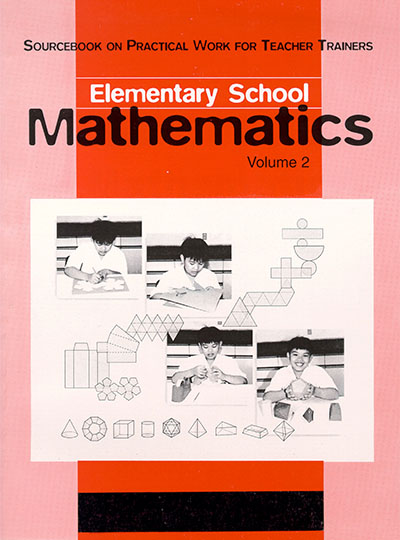
Elementary School Mathematics Education Group ISBN 971-570-075-6 Published by NISMED February 2000
No of Pages: 251
____________
This volume was written for teacher trainers as well as classrom teachers in elementary mathematics, balancing its approach to address the needs of both groups. There have been efforts to bring down the treatment of some topics so that they can be used in the classroom with less modification. More importantly, classroom teachers will also benefit from the detailed lesson plans which are meant to demonstrate how practical work may be used to teach the subject to elementary pupils. Each lesson begins with a problem solving activity whereby the teacher is encouraged to make the pupils use and discover a variety of problem solving strategies.
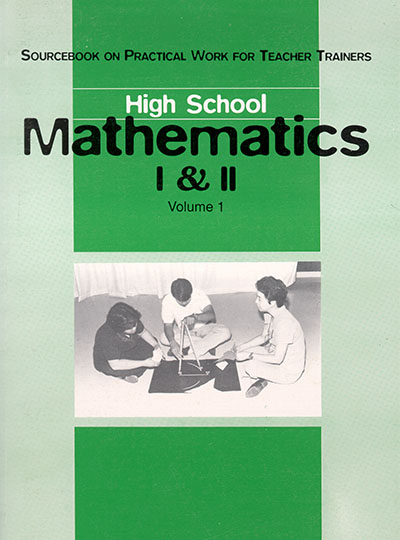
Sourcebook on Practical Work for Teacher Trainers High School Mathematics I & II Vol. 1 High School Mathematics Education Group ISBN 971-570-056-X Published by NISMED February 2000
Price: ₱ 300.00 No of Pages: 277
____________
This Sourcebook highlights the dynamic nature of teaching and learning mathematics. This dynamism is one feature of constructivism. In constructivism, learners use what they already know to make sense of the world as they interact with the physical, social, and cultural environments. Constructivism advocates that teachers should be facilitators of learners' active constructions.
Many opportunities for learners to do mathematics are provided in the Sourcebook. They must be able to think for themselves, to reason and explain, to discover connections, and to reflect and consolidate their learning. In the end, they should develop confidence in their ability to do and create mathematics, recognize and apply mathematics in their everyday activities and appreciate the importance of mathematics. These can be enhanced in an environment that is friendly, and where ideas are welcomed and respected.
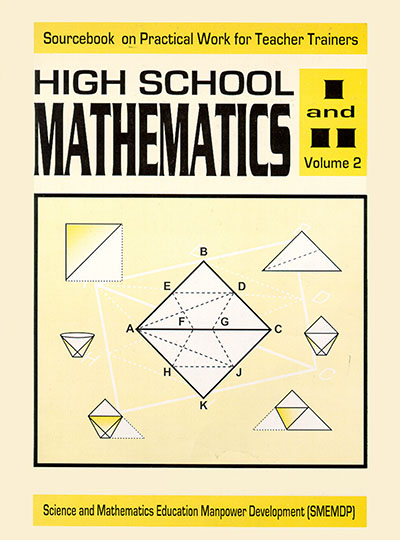
High School Mathematics Education Group ISBN 971-570-078-0 Published by NISMED January 2001
No of Pages: 220
____________
This sourcebook highlights the dynamic nature of the process of teaching and learning mathematics. As in the first volume, it provides the teacher trainer examples of teaching plans that promote the use of practical work. Practical work is consistent with the social constructivist view of learning which postulates that learners actively construct knowledge from their own experiences and that while these constructions are personal and unique to each individual, it occurs within a social setting. The activities in the teaching plan aim to develop and deepen the learners understanding of mathematical concept s and principles and enhance their ability to think and engage in life-long learning. They provide rich experiences in investigating relationships among mathematical concepts and principles and in posing and solving problems.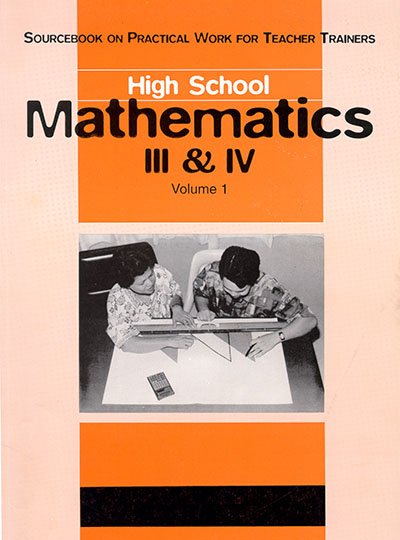
High School Mathematics Education Group ISBN 971-570-057-8 Published by NISMED December 1999
No of Pages: 239
____________
This Sourcebook highlights the dynamic nature of teaching and learning mathematics. This dynamism is one feature of constructivism. In constructivism, learners use what they already know to make sense of the world as they interact with the physical, social, and cultural environments. Constructivism advocates that teachers should be facilitators of learners' active constructions.
Many opportunities for learners to do mathematics are provided in the Sourcebook. They must be able to think for themselves, to reason and explain, to discover connections, and to reflect and consolidate their learning. In the end, they should develop confidence in their ability to do and create mathematics, recognize and apply mathematics in their everyday activities and appreciate the importance of mathematics. These can be enhanced in an environment that is friendly, and where ideas are welcomed and respected.

High School Mathematics Education Group ISBN 971-570-079-9 Published by NISMED March 2001
No of Pages: 200
____________
This sourcebook highlights the dynamic nature of the process of teaching and learning mathematics. As in the first volume, it provides the teacher trainer examples of teaching plans that promote the use of practical work. Practical work is consistent with the social constructivist view of learning which postulates that learners actively construct knowledge from their own experiences and that while these constructions are personal and unique to each individual, it occurs within a social setting. The activities in the teaching plan aim to develop and deepen the learners understanding of mathematical concept s and principles and enhance their ability to think and engage in life-long learning. They provide rich experiences in investigating relationships among mathematical concepts and principles and in posing and solving problems.